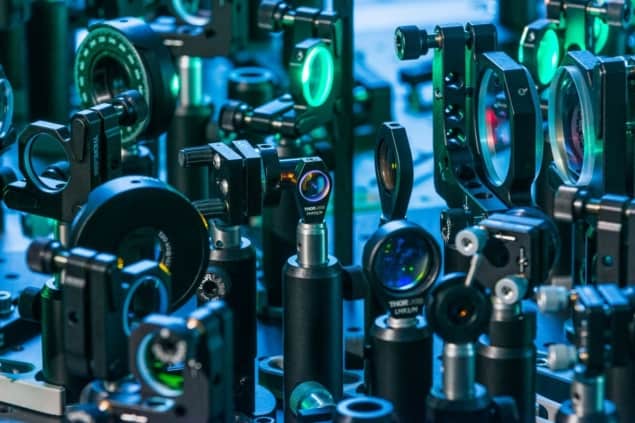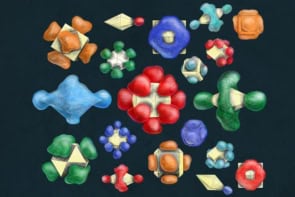
Recent advances in next-generation laser technology could take us a step closer to understanding the structure, orientation, and dynamics of lipid monolayers. These monolayers are key materials for the development of artificial lung surfactants, which are used to treat several respiratory diseases, including respiratory distress syndrome. Zsuzsanna Heiner, a researcher at SALSA – School of Analytical Sciences Adlershof and Humboldt Universität zu Berlin , alongside colleagues in Berlin, Germany, have now provided an alternative method to characterize lipid monolayers using broadband vibrational sum-frequency generation (VSFG) to gain new insights into lung surfactants.
In healthy lungs, a surfactant layer covers the alveoli to support the pulmonary functions. An insufficient coverage requires the immediate administration of lung surfactants from external sources, which often means the use of artificial mixtures. To understand the behaviour of artificial mixtures at the lung-air interfaces, scientists use experimental approaches such as VFSG that provide information about surfaces. However previous VSFG investigations have struggled to optimize the data retrieved without causing potential damage to structures like lipid monolayers.
Obtaining a molecular fingerprint
VSFG is a nonlinear vibrational spectroscopic technique for studying surfaces, and is based on two spatially and temporally overlapping laser beams – one in the mid-infrared and one at a visible wavelength. The mid-infrared laser is resonant with the molecular vibrations of interest, so that spectral measurements retrieve detailed information characteristic to the molecules, that is, the “molecular fingerprint”. The visible laser pulses then upconvert this vibrational fingerprint to higher frequencies in the visible range, which is easy to detect with silicon-based devices.
Unlike many other spectroscopic techniques this VSFG approach is label-free and provides information about the interfacial functional groups of the molecules. In this work Heiner and her colleagues exploit these capabilities to study the groups at the calcium fluoride-air interface, which is ideal for studying the orientation of lipid molecules at interfaces.
The need for speed
Previous experiments have mostly used VSFG with lasers operating at a relatively low 1 kHz repetition rate. As a result a longer laser excitation time is needed to collect the necessary data, which could potentially disrupt the delicate structure of the monolayers and induce changes in the structure of unsaturated lipids.
“Researchers usually use spectral filters or etalons to produce visible pulses with narrow bandwidth,” explains Heiner, head of SALSA Photonics Lab. Here the drawback is the negative impact on the conversion efficiency of the process and the bandwidth, which is then limited to 20-30 cm-1, reducing the spectral resolution and hence the precision of the quantitative spectral analysis and resulting molecular orientation calculations.

Raman spectroscopy guides brain biopsies
Heiner explains how she and her colleagues used “chirped” sum-frequency generation, where the femtosecond near-infrared laser pulses are split into two parts: for one part the dispersion – the spread of the pulse as a result of different frequency components travelling at different velocities – is positive, while for the other part it is negative. The two oppositely chirped pulses are then focused into a birefringent barium borate crystal to produce narrowband visible pulses. “With this we can reach up to 25% conversion efficiency, while decreasing the bandwidth,” says Heiner.
Shorter exposure times, more spectral information
In their experiments, Heiner and colleagues study lipid monolayers with different mixtures of 1,2-dipalmitoyl-sn-glycero-3-phosphocholine (DPPC) and 1,2-dioleoyl-sn-glycero-3-phosphocholine (DOPC) – two phospholipids that are major constituents of lung surfactants. They couple their broad-band VSFG with a pump laser operating at 100 kHz repetition rate, which dramatically reduces the excitation time and shows a tenfold improvement in the spectral resolution. With this improvement in instrumentation, the research team were able to conduct the first systematic study of surfactant monolayer models at the interfaces with varying surface pressure and composition.
The researchers demonstrated how it is now possible to study monolayers containing unsaturated lipids without sample deterioration due to long exposure times and other time-dependent experimental artefacts. The spectral features they observed are consistent with similar studies in the field, however they also found additional vibrational bands in the carbon-hydrogen stretching region with the signal-to-noise ratio of approximately 2000.
“In our experiments we could resolve eleven vibrational bands of the sample with a solid-supported DPPC monolayer in the 2800-3000 cm-1 region, more than previously observed,” explains Heiner. “This is especially important when our goal is to retrieve information about the structure and physicochemical properties of the interfacial molecular layer.”
Full details of these recent results are published in Analytical and Bioanalytical Chemistry.



